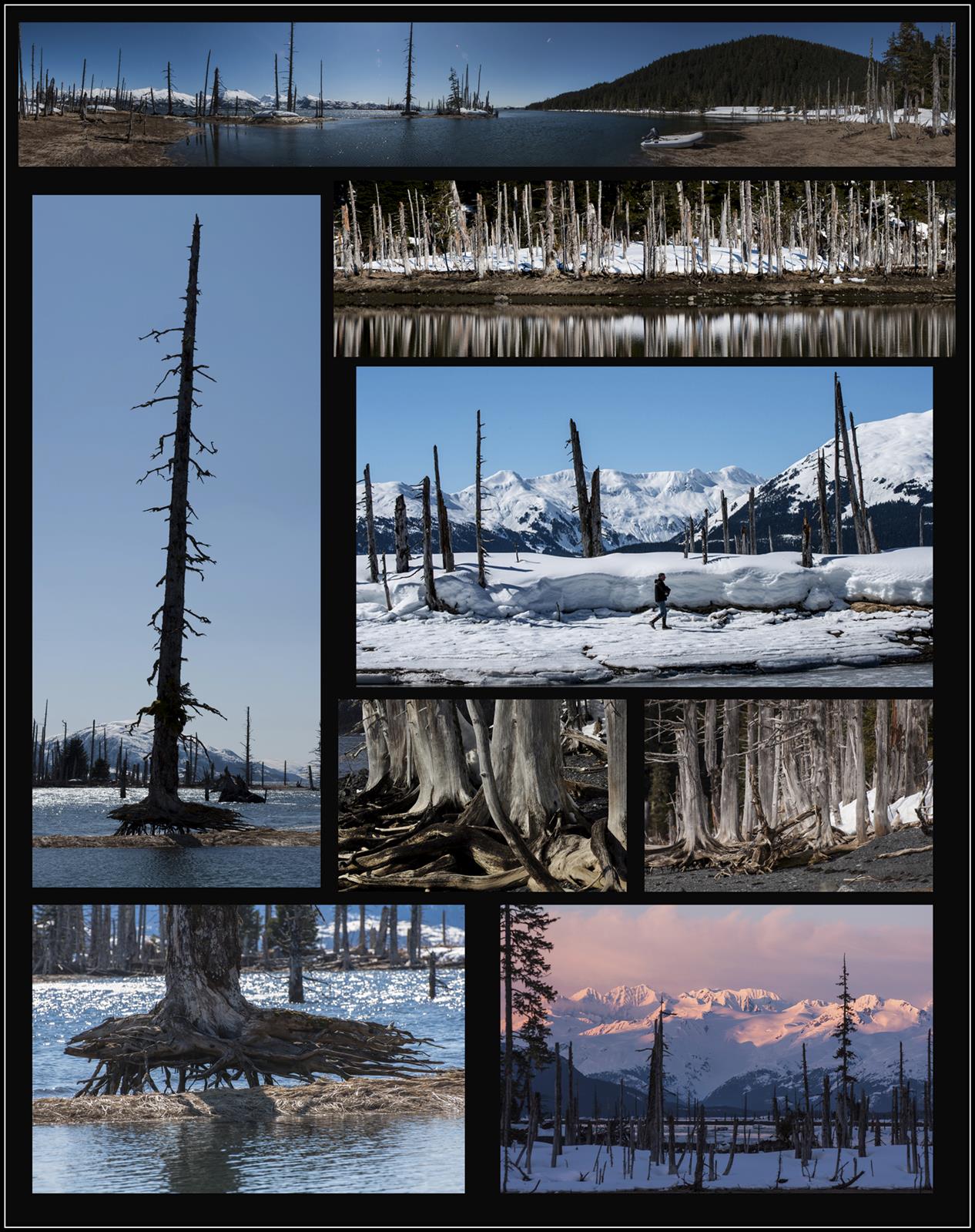
Earthquake Forests
The 1964 Good Friday Earthquake occurred about six miles east of the mouth of College Fjord, measured a magnitude of 9.2, and was the second largest earthquake in recorded history. The "Great Alaskan Quake" caused heavy damage in coastal towns, and in some areas as far away as Kodiak, land was raised 30 feet, while near Anchorage land dropped as much as eight feet.
Post-quake tsunamis affected people and property in British Columbia, Washington, Oregon, California, and caused damage in Hawaii and Japan. Evidence of motion was even reported in Florida and Texas.
Over a half-century later, there are still a few signs left that show the effects of the quake, especially on the shores of College Fjord in northeastern Prince William Sound. Countless trees along the shoreline sank and, as they drew brackish water into their root systems, they succumbed to salt-water saturation. Many trees are still “standing dead” today. Powerful storms, heavy rain, and winter snowloads, along with daily tidal forces, have eroded the land and beach over the decades, but the roots will keep many of them standing for a very long time to come.
It is a contrasting sight to see as the forests surviving behind the dead trees are a very rich green, lush, and healthy, with old, giant spruce that were mere saplings when the glaciers first receded from these shores centuries ago. One would think there is plenty of wood from these dead trees to have fires and keep warm here in glacier country … which would be a dangerous assumption … because the salt-saturated wood will not burn.
All images © Dave Parkhurst www.TheAlaskaCollection.com



